If there’s one thing to know about social media, it’s that you can expect it to keep you on your toes 24/7. Keeping up with all things social is important for brands, but it’s hard, and when integrating social media into your marketing, you have to do it right. So let us break it down for you.
Changing Social Media Terms to Inform Your Strategy
Social media is all about adaptation, and even though methods and strategies didn’t make a full 360 on January 1st, we need to prepare for some upcoming changes in the language of social. Here’s a list of 7 social media terms to familiarize yourself with when thinking about your customers.
- Memefication
- Private Communities
- Social Monitoring
- Unhinged Content
- AI-Generated Content
- Social Commerce
- Gamefication
7 Social Media Terms + Examples
1. Memefication
One type of content that has continued to be successful is memes. In 2025, brands will practice the art of memefying themselves, aka, memefication.
It’s not necessarily about making memes out of other viral moments, but making memes from your own virality. Whether it’s based on a popular conversation amongst users of your brand or something that turned into a highly talked about topic – negative or positive – it can be memefied.
The Muppets Meme
The Muppets meme of Pepe became viral in December of 2024. Creators and brands took it in their own hands to replicate the trend in their own way, following the format of the meme. As a result, Disney responded with their own image of Pepe. Disney’s response video received a huge response with over 9 million views and almost 2 million likes.
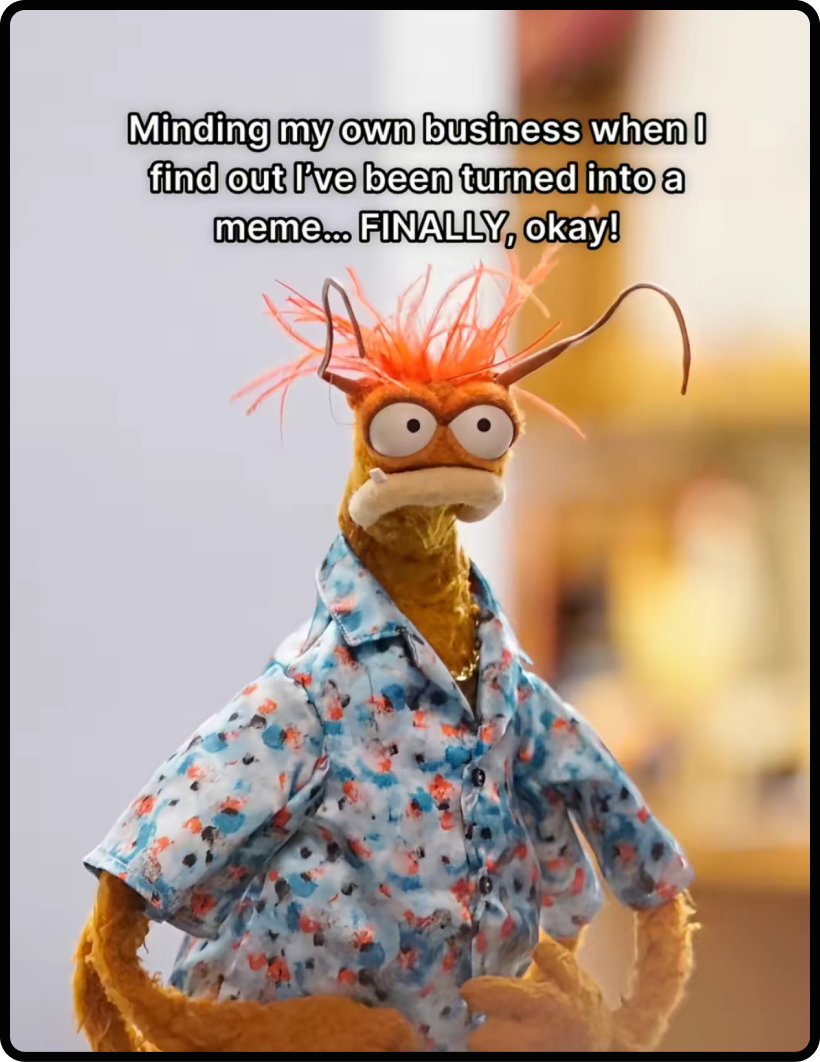
Popular comments like, “Nah… blurry Pepe portrays exactly what we need,” “the blurry one is the emotion we desire,” and “you do not get to choose in what way you become memefied, Pepe,” are direct responses highlighting user’s emotions and reactions to the original meme, which was a blurry image of Pepe that portrayed “disarray and being a mess” in life.
It was a great opportunity that Disney took to poke fun at the viral trend, memefiying their character. Whether people liked it or not, it got the attention they were hoping for.
2. Private Communities
If there’s one thing users are feeling the most, it’s FOMO. People are constantly craving in-person experiences and finding outlets to build those connections whether it’s through IRL events or online communities. Brands can leverage this feeling to build loyalty and trust with users as they make memories.
Memories are viral moments. When creators capture these IRL events, FOMO arises, causing current and new users to want to be a part of a community.
Art Basel in Miami
The most recent Art Basel event, known for being an art exhibition and selling art, had a huge celebrity/influencer turnout. Popular TikTokers were invited by brands who were also first-timers to the high status event like Ulta, Stanley, Joe and the Juice, and many more.
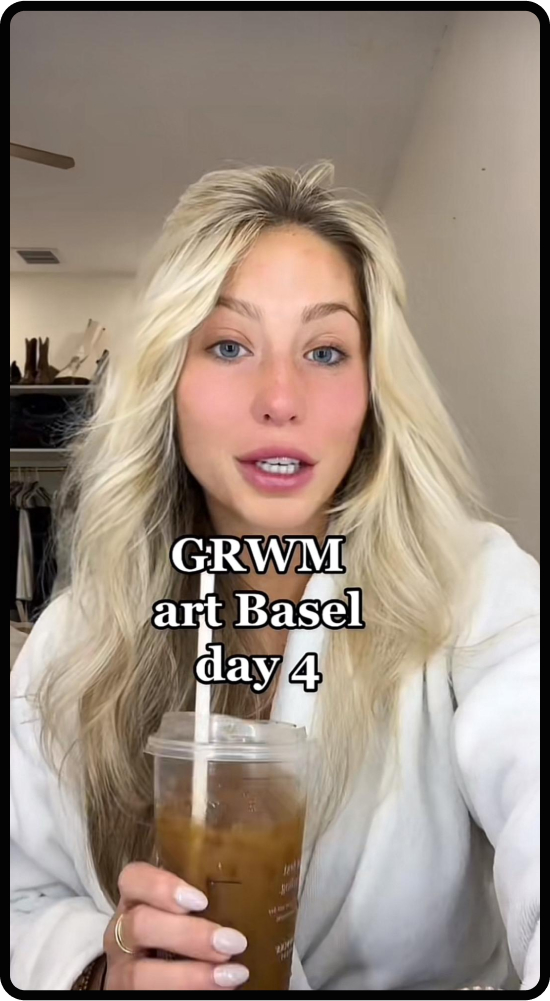
IRL moments are often captured and plastered all over the internet. Videos of influencers were posted on socials, showing their status and opportunity for getting access to Art Basel. Being known as a place where high status people go, it generates the feeling of FOMO for users to wish and want to be a part of these important moments.
3. Social Monitoring
If social media had a visual clock, time would be moving at the speed of light. Being able to monitor online trends is crucial to staying in the loop of all things viral. Viral moments happen everyday, but only some moments make it to recognizable trends.
Social media managers will need to practice daily market research across channels and news outlets. Moments from IRL cultural events to skits, lip syncs, or meme trends will be instrumental in not only squeezing into the algorithm but being able to speak a user’s language.
Nuuly
Nuuly, the rent clothing brand, posted their own version of the viral muppet trend. In their version, they recalled an unfortunate story. Typically, Nuuly’s content style on TikTok consists of POVs, trending audios, and brand focused videos.
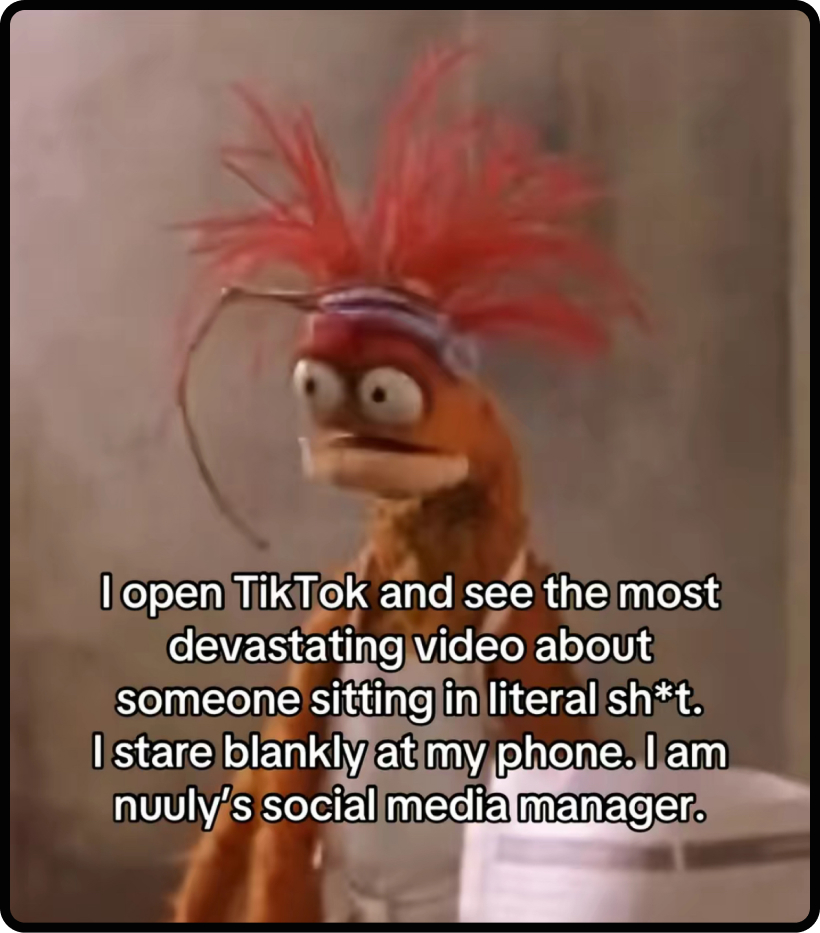
Compared to the success of their current history of content – with views typically under 12k – their version of the muppet trend became the highest viewed video on their account. It’s currently pinned with over 5 million views and over 570k likes. Nuuly was able to tell a story that related to their brand but was also engaging enough for non-users to stop and scroll through the carousel.
Not only was Nuuly able to speak a user’s language, but they were also able to reach a new audience and gain new followers, making impressions and boosting their page.
4. Unhinged Content
To be unhinged is to be authentically yourself. Content doesn’t have to be dramatic, disturbing, or surprising for it to be unhinged – it means to step away from what your sense of normalcy is.
In the traditional scope of marketing, ads and commercials gravitate towards being product heavy, focusing on selling rather than telling a story. In 2025, content will all be about sharing stories and building connections. That’s what we have the paid team for – ads. When it comes to content, there are three indicators of a valuable post: storytelling, character, and relatability.
How well can you tell a story? How much can we take away about who your brand is? How much can people relate to your content to build a connection with your brand? It’s about being unapologetically yourself without restraints of what you think looks “clean” or “professional to post.”
Professional, high-quality cut content is out of touch with today’s society. Immediately, users get nostalgia and relate it to commercials that were paid heavy, triggering an immediate swipe. Clean cut, high-produced, and professional content will die down almost completely across social platforms.
Duolingo
The green bird has broken the barriers of what content means time and time again. Duolingo’s content is full of character and personality, building a narrative that they’ve fully embraced in their content strategy. We’ve seen this through their elaborate Christmas music video, “Bring My Parents Back,” which is a response to the narrative that the Duo bird will kidnap you or threaten you in one way or another for not maintaining your streak.
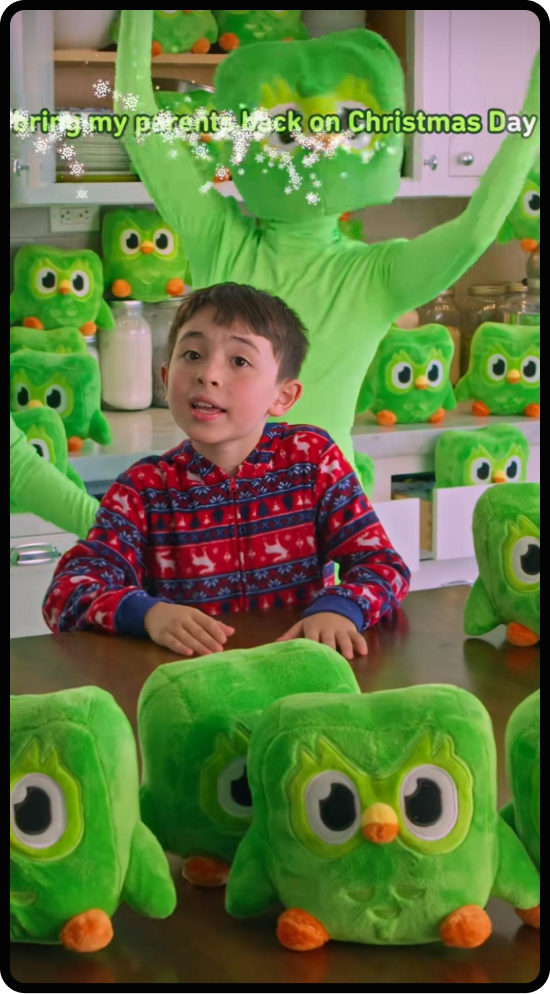
As much as we see Duolingo dominating mascot marketing – take notes, Mickey – we can look at competitors like Rosetta Stone and see where the difference lies. Duolingo sells their personality instead of their product. A lot of people online have said Duolingo doesn’t really help you learn a new language – yet, their marketing is so effective that it’s the first platform you think of when deciding to try to learn a new language. The paid aspect of brand content is the way a brand is carried versus how they sell.
Rosetta Stone for example, with 149k followers, has their content framed around teaching facts about different languages. The channel is super language based, educational, and shows different faces each day. It has a consistent message but lacks relatability to create connections. Sometimes, educational content needs to have a balance of the two. Essentially, making content with an exploration and discussion approach rather than just a teach and listen moment makes all the difference.
5. AI-Generated Content
New forms of storytelling will be on the rise thanks to AI. We’ve seen updates in Premier Pro’s AI tools, and this platform is becoming the go-to for creators to produce content in unique ways. Editing and cutting down long-form content into short-form content are important AI tools to utilize. Not only will AI help edit content, but it will also produce images to enhance visual storytelling elements.
Storytelling has become an essential part of content creation over time. Visual elements that are eye-catching and colorful are favored on platforms such as Youtube and Instagram. Using AI to produce graphics and elements for your channels can elevate your delivery style, further scaling your brand. Sooner than later, most content will exist with at least one AI modification.
Coca Cola Christmas AI Ad
The Coca Cola Christmas ad in 2024 was their first time recreating their iconic holiday ad with AI integration. As a result, it faced backlash with many pointing out how inauthentic and fake their ad looked. From AI-generated people to critical detail mistakes, many aspects of the ad were bashed. Users have expressed concerns of over-utilizing AI in ads, which may overthrow the perception of AI’s benefits in the content creation world.
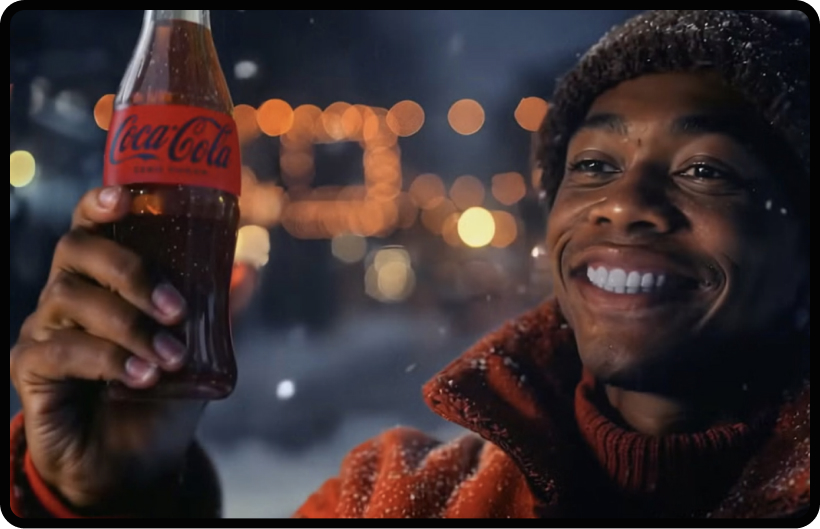
The Coca Cola ad was an example of how AI shouldn’t be used to sell a product. It missed the mark in connection with their core audience, especially during the holiday season. AI tools in software are a game changer but should be used in ways to enhance rather than replace traditional filming and art.
6. Social Commerce
TikTok shop has been pivotal in changing the way users consume content. Now more than ever, social media platforms have become saturated with content surrounding buying products from hauls to cheapest finds. Every few videos on your FYP seem to contain the orange shopping cart button, a now recognizable symbol for a paid promotion, triggering users to swipe — unless it goes viral enough to garner engagement.
Social media trends like “dupe culture” are great contributors to the overwhelming and saturated scope of consumer habits where buying less for more is favored over quality. These ongoing trends are pushing the demand for purchase and accessibility more, influencing other platforms to integrate TikTok Shop’s UX into their own shops. Social commerce is something brands can use to grow their businesses.
eBay Integration With Facebook
We’ve seen apps like Facebook and Instagram already integrate in-app purchases to their platforms. Just recently, Meta has allowed some eBay listings on Facebook Marketplace, causing a 9% increase in shares. With competition against companies like Temu and Amazon, eBay will benefit greatly from Facebook. Since Facebook is a social media platform whereas eBay is solely for shopping, it will be more accessible for users to shop with them.
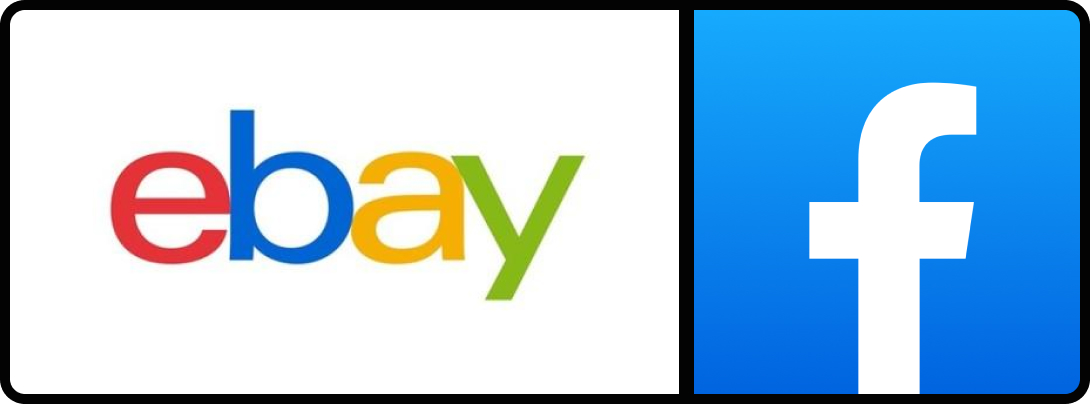
Seeing how impactful TikTok Shop was to consumer behavior, we will most likely see more updates in other platforms to create a similar seamless shopping experience for their users. Social commerce will continue to expand and be pivotal to how brands can reach users to influence them to buy their products.
7. Gamification
Experiences IRL and online will become more gamefied. It’s become a way for users to engage with and build connections with brands. Sometimes, static content doesn’t work, and other methods of engagement are needed for users to feel like they can stay on an app longer than usual. Methods like spin the wheel, giveaways, badge earning, and rewards are common ways we see brands encouraging users to stick with them.
Squid Game on TikTok
The day after Christmas, Squid Game season 2 was released and became a huge hit. Partnering with TikTok, the platform created a real Squid Game app game for users to participate in. Games from the season 2 show were included, prompting users to complete all levels to receive a 456 profile picture frame for their accounts.
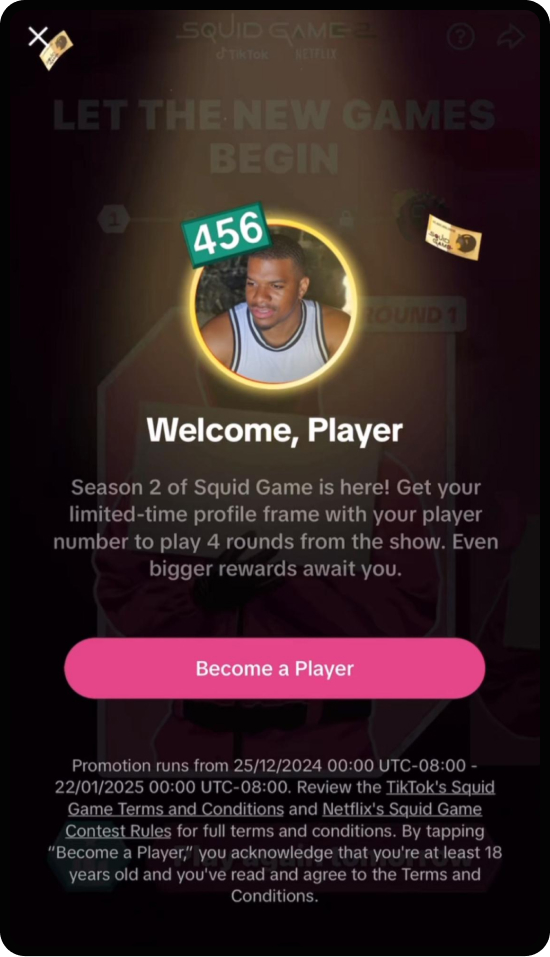
Earning the 456 frame shows status for not only knowing Squid Game but for being able to complete the game levels that others may not be able to. The frame is like a badge of honor for users to feel like they’re a part of something. We’ve seen this with other examples like the red lipstick stain on Instagram for their notes promoting Sabrina Carpenter’s Short N’ Sweet album.
Key Takeaways
Understanding these 7 social media terms is crucial for staying relevant and competitive as a brand in the new year. By aligning with trending language, cultural moments, and platform-specific nuances, you can enhance brand visibility.
This approach not only boosts your online presence but also positions your brand as relatable and in tune with evolving digital conversations — ultimately driving loyalty, growth, and success in a quickly evolving social media landscape.







These 7 social media terms are definitely a must-know as we head into 2025! It’s crucial to stay ahead of the curve when it comes to understanding the latest trends and technologies shaping the digital marketing landscape. Great post and a helpful guide for marketers looking to level up their social media strategy!